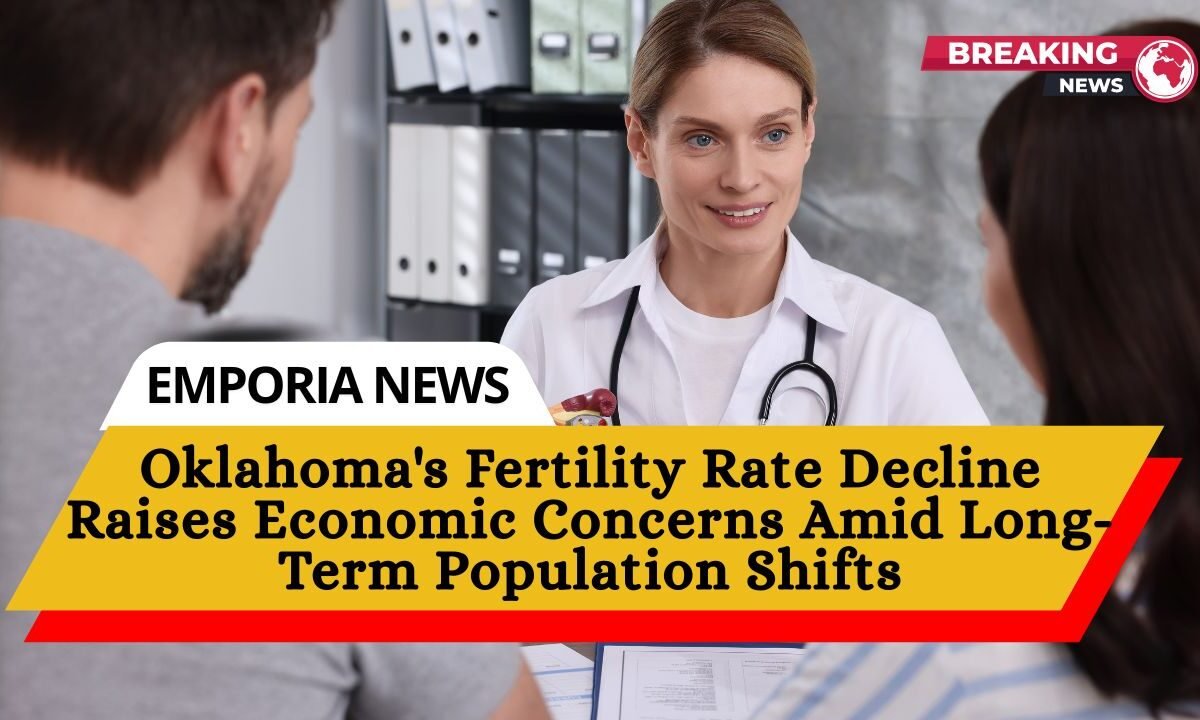Oklahoma’s fertility rate continues to decline in line with a broader national downward trend, potentially triggering long-term economic challenges, according to a new report by Pew Charitable Trusts.
The data shows a 12.2% drop in Oklahoma’s fertility rate since 2011, reaching 59.1 births per 1,000 women in 2023. Comparatively, the national rate fell by 10.6%, settling at a record low of 54.5 births per 1,000 women.
Among 17 states and Washington D.C., Oklahoma recorded the second-largest decline, highlighting regional demographic shifts that could reshape budget planning in years ahead.
Reasons Behind the Decline
Several contributing factors are driving the continued drop in birth rates, including:
- Fewer teen pregnancies
- Delayed childbearing among women
- Lingering effects of economic recessions
The report emphasized that while fertility rates have historically rebounded after recessions, this pattern broke post-2007–09 Great Recession, with rates continuing to decline even during economic recovery. The COVID-19 pandemic in 2020 intensified the decline with a record annual drop in births nationwide.
Short-Term Gains, Long-Term Strains
While lower fertility rates may provide temporary relief in sectors like health care and education, the long-term consequences could be severe. With fewer births, states like Oklahoma may collect less tax revenue, straining budgets and impacting public services.
David Hamby, spokesperson for the Oklahoma Policy Institute, said the declining fertility rates may be linked to Oklahoma’s overall child-rearing environment. The state ranks 46th nationally in the Kids Count Report for child well-being, and falls in the bottom 10 across four key areas:
- Health
- Economic well-being
- Education
- Family and community support
“This reality causes families to delay or reconsider having children in Oklahoma,” Hamby noted.
Teen Pregnancy and Later Motherhood Trends
The teen birth rate in Oklahoma has dropped, yet remains higher than the national average. In 2023, 21 births per 1,000 teens (ages 15–19) were recorded in Oklahoma, down from 27 in 2019. Nationally, the figure stood at 13 teen births per 1,000.
At the same time, more Oklahomans are waiting until later in life to start families. Since 2007, births among women under 24 have declined, while those 25 and older have increased.
“We’re seeing fewer young families and an aging population,” said Hamby.
Budget Pressure and Aging Demographics
With the population aging and birth rates falling, demand for elder care and related services is expected to rise, which could place increased pressure on Oklahoma’s state budget.
Hamby warns that without new investments, especially as federal funding decreases, the state may struggle to maintain current service levels.
“If state revenue remains flat, but demands continue to grow, we’ll face an unsustainable situation,” Hamby stated. “That’s not a formula that adds up for long-term success.”
Oklahoma’s persistent decline in fertility rates mirrors national trends but presents unique local challenges. With a shrinking younger population and rising demands on public resources for seniors, state lawmakers face difficult decisions ahead.
If the state fails to invest in infrastructure, services, and support for families, the current decline could lead to economic stagnation and reduced quality of life for future generations.




